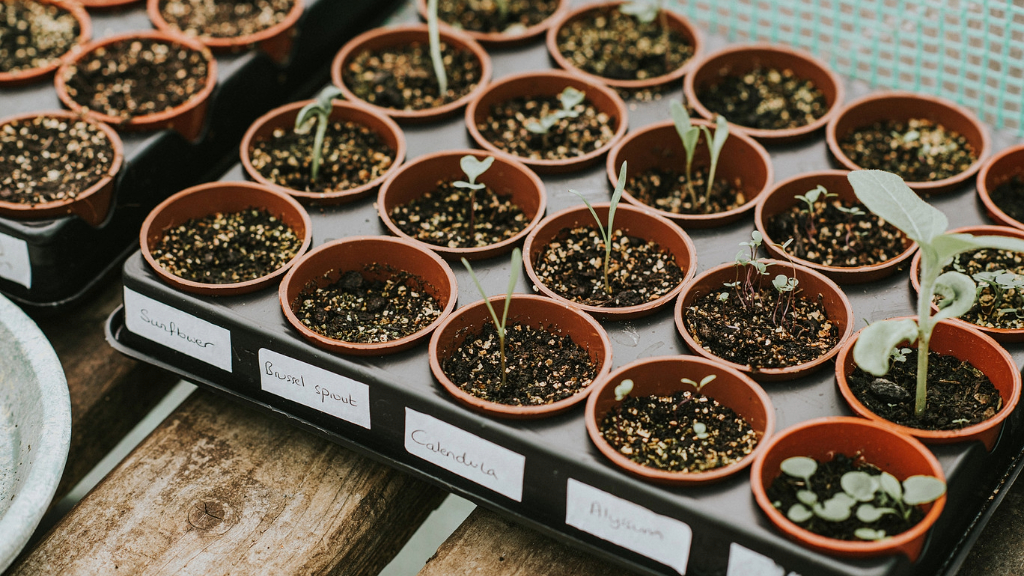Finding Homes For Unwanted Seedlings


I usually have pretty good luck starting my own vegetable seedlings. While it's a great way to cut the cost of planting a garden, there is one problem I wish I could overcome. It's difficult to start and grow the exact number of seedlings I need and want.
What To Do With Extra Seedlings
Sometimes I go a little crazy and start way too many seeds. Other times, germination percentages are higher than expected. Either way, it's all too easy to end up with more seedlings than I have on my plan for the garden.
So, the question is, “what can gardeners do with these extra seedlings?” To me, tossing these plants feels like a waste of my time and energy, not to mention the actual cost of starting plants. Luckily, I've discovered a few positive outlets for these leftover plants:
- Double plant – Short season crops, like lettuce, can be tucked between tomato or corn plants. The lettuce will be ready for harvest long before the other plants fill the space.
- Fill the flowerbeds – Yes, I've been known to plant veggie seedlings in lieu of annual flowers around the house. Some garden veggies, like cayenne peppers, are downright eye catching.
- Give or trade with other gardeners – We all know other gardeners, so giving extra seedlings to my family or friends has been one of my traditional go-to solutions. Sometimes gardening friends have plants that I need as well.
- Replace lost plants – Every year I lose a few transplants to critters. Hanging onto a few extra seedlings means I can fill those spots and not lose valuable gardening space. Of course, I may end up with a celery plant amid my cabbage.
- Container garden – In recent years, I've discovered the benefits of growing a few veggie plants in planters near the house. When the pandemic limited social contact, I planted my extra seedlings in containers.
- Early harvest – Some seedlings, like lettuce, can be harvested and consumed as baby greens. I've used this option when faced with excess cabbage, celery, lettuce, and Swiss chard seedlings.
- Donate – As a service project one year the 4-H club I advised grew a garden for the “Plant a Row for the Hungry” program. Plant donations from myself and other gardening parents gave the kids what they needed for the project.
- Sell – While I've never put my extra seedlings out by the side of the road for sale, I have stopped and bought seedlings from home gardeners who have done this. I find these plants are usually less expensive and just as healthy as those from the nursery.
Gardening tips, videos, info and more delivered right to your inbox!
Sign up for the Gardening Know How newsletter today and receive a free copy of our e-book "How to Grow Delicious Tomatoes".

Laura Miller has been gardening all her life. Holding a degree in Biology, Nutrition, and Agriculture, Laura's area of expertise is vegetables, herbs, and all things edible. She lives in Ohio.
-
 Grow ‘Karl Rosenfield’ Peony Plants For The Ultimate Frilly Border Beauties And Cut Flowers
Grow ‘Karl Rosenfield’ Peony Plants For The Ultimate Frilly Border Beauties And Cut FlowersFor frilly double magenta peony petals infused with a heady fragrance, grow ‘Karl Rosenfield’ peony plants. Here’s how to cultivate the ultimate plushy blooms
By Tonya Barnett
-
 10 Common Composting Problems That Can Spoil Your Garden Gold – Plus Easy Fixes
10 Common Composting Problems That Can Spoil Your Garden Gold – Plus Easy FixesLearn how to troubleshoot common composting issues before they ruin your stash – from bad smells and bugs to materials not breaking down as they should.
By Susan Albert